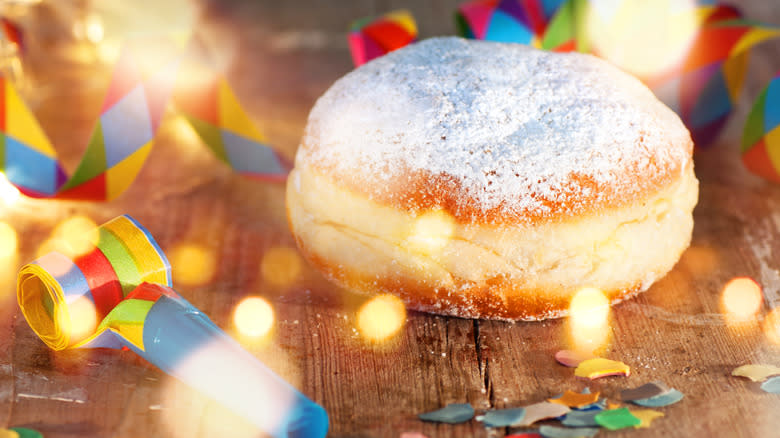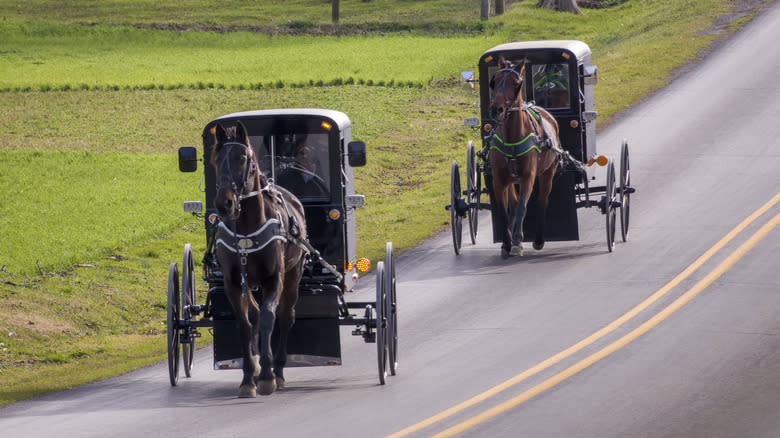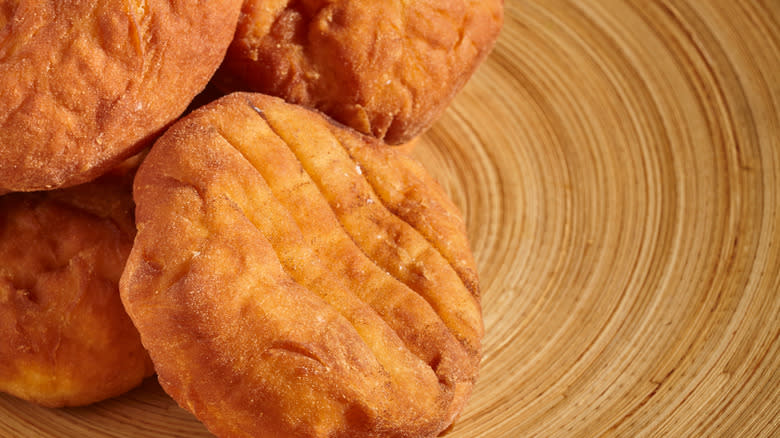What Are Fasnacht Donuts And What Makes Them Special?

Just about everyone adores a fried donut. After all, what's not to love about the sticky sweetness of a slightly crispy exterior cloaking a soft doughy center -- all of which embrace the cellular call for fried food? Where New Orleans serves beignets and the rest of the country produces an indulgent amount of "regular" donuts, the fasnacht is its own unique pastry. In fact, even if you master the art of making the absolute best donuts, fasnachts offer a makeup that might fall into another category altogether.
Call it fasnacht, fastnacht, faschnaut, or faschnacht. Regardless of how you dub it, this sweet treat of German origin has become an iconic symbol and flavor of both Carnival and Easter, especially within the Pennsylvania Dutch community. It's a batter-fried dough that shares characteristics with donuts while bringing its own spin on the widely-favored delight. Visually, the primary difference is that a fasnacht doesn't have a hole in the middle. Looking through the layers, however, there are other features that make the fasnacht its own special delicacy.
Read more: Cake Hacks Every Baker Will Wish They Knew Sooner
The Sweet Tradition Of Fasnacht

Fasnachts share an origin with other commonly recognized sweets. In the same way that eating pancakes on Mardi Gras is a centuries-old tradition, fasnacht donuts started out as a way to use up dairy, fat, and sugar in the house before bowing to the dietary restrictions of Lent, a traditional 40-day fast and prayer period that begins on Ash Wednesday and leads up to Easter. The name of this form of doughy goodness originated in Germany, with "fas" being a form of the German word "to fast" and "nacht" meaning "night".
Fasting Night is the night before Lent and goes by several names around the globe including Mardi Gras, Fat Tuesday, Shrove Tuesday, Pancake Day, and Fasnacht Tuesday. German immigrants brought the fasnacht tradition to the United States in the 1600s where it took root in the Pennsylvania Dutch community. Even today, it's a highly regional treat that people in other parts of the country -- even just a few states over -- are often unfamiliar with.
What Makes Fasnachts So Special?

A donut is a donut, right? Well, stand in front of any bakery counter and you'll know that's not true. Fasnacht donuts are unique in several ways. First, they are a solid circle or square, rather than having a hole in the center. They are larger, typically unfilled, and are more dense than the standard fluffy, flaky donut. Fasnachts are also less sweet than their more prolific cousins, with some even including potatoes in the recipe.
Unlike traditional donuts that are topped with everything from bacon to peanut butter, fasnachts stick to a strict selection of either powdered, granulated, or cinnamon sugar. Occasionally, you may also see them glazed, and a few bakers add a modern spin by filling them with custards or creams. Most fasnachts are served in their traditional form with a light dusting of sugar. But because they have a heartier makeup, many people cut them in half lengthwise, add additional sweetness via toppings like syrup or jam, and put them back together to enjoy sandwich style.
Read the original article on Daily Meal.
